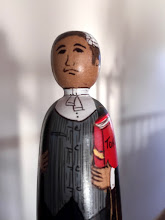Why do barristers wear wigs and gowns? How did the practice begin? I mean, why not corsets and suspender belts? Good questions indeed. This is the first of three articles that answer the questions.
English judges have worn wigs
and gowns in court since the Royal Decree of 1635. Some wear them out of court
too, but that is an entirely private matter.
Barristers were not subject to the decree but stupidly
followed suit nonetheless.
Colonial good sense meant that the practice was resisted in
Australia. The notion that a mullet-cut horsehair beanie and woollen man-gown
somehow bestows dignity was met with suspicion. That doubtfulness and the heat
meant that they weren’t widely adopted until the mid 1800’s.
It is not recorded how many judges and counsel collapsed and
died during the long Australian summers that followed, but it must have been more than a
few. Nor is it recorded how many submissions and decisions were dangerously
infected by the confusion of a gently simmering brain.
Court rooms are air conditioned today, but it’s never
enough. Make no mistake, court garb remains a dangerous conceit.
Robes can strip dignity if you are lucky and take your life
if you are not. Let me explain. They are heavy woollen affairs, black to catch
and retain as much heat as possible. Even those touted as made of ‘summer wool’
smother and hang like lead. Summer wool? I suppose it means that one in 100
fibres is cotton.
Robes restrict your movement, enclose your body heat and
channel sweat down your neck and torso, over your arse and genitals, down your
pins to your boots. There the warm liquid concentrates until your feet squelch
as you pace and rock from foot to foot during cross-examination. In time salty
tide lines form under the sleeves and around your rump; trials and sentences
recorded for posterity.
They menace movement too. While the odd judge glides into
court as if riding a hover-board, by and large counsel flap and trip about the
place.
Worst of all, robes conspire with furniture and fittings to
become particularly unsafe. Billowing sleeves catch door handles, jerking
speeding counsel from their feet. Hems wedge in the wheels of court chairs
forcing counsel to make submissions crouched like Golem. Worn to the loo almost
anything can happen, none of it good.
Still we wear them: those black heavy hangovers from the
past.
Why? You ask.
Well. It’s the dignity you see.



No comments:
Post a Comment